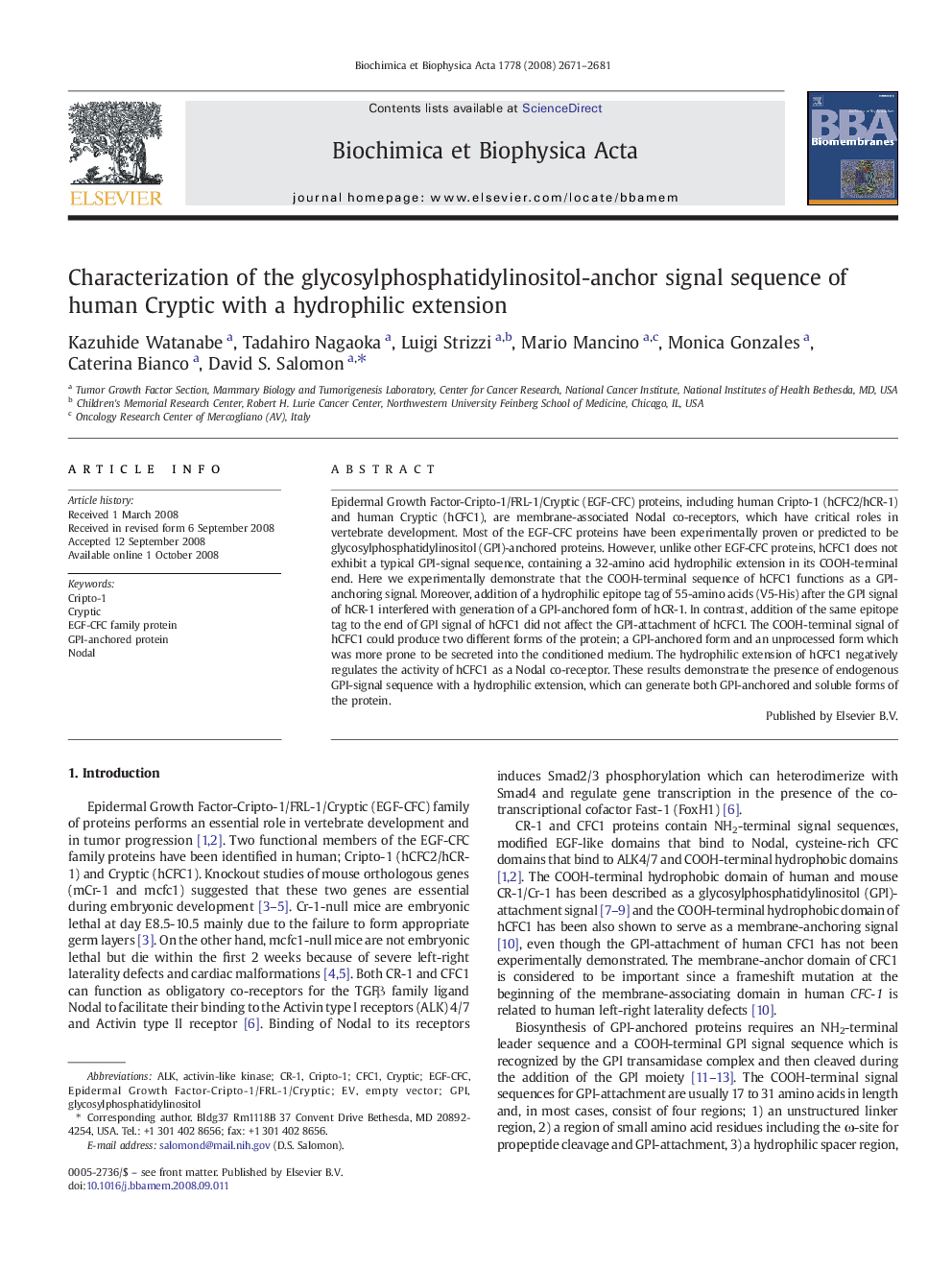| Article ID | Journal | Published Year | Pages | File Type |
|---|---|---|---|---|
| 1945115 | Biochimica et Biophysica Acta (BBA) - Biomembranes | 2008 | 11 Pages |
Abstract
Epidermal Growth Factor-Cripto-1/FRL-1/Cryptic (EGF-CFC) proteins, including human Cripto-1 (hCFC2/hCR-1) and human Cryptic (hCFC1), are membrane-associated Nodal co-receptors, which have critical roles in vertebrate development. Most of the EGF-CFC proteins have been experimentally proven or predicted to be glycosylphosphatidylinositol (GPI)-anchored proteins. However, unlike other EGF-CFC proteins, hCFC1 does not exhibit a typical GPI-signal sequence, containing a 32-amino acid hydrophilic extension in its COOH-terminal end. Here we experimentally demonstrate that the COOH-terminal sequence of hCFC1 functions as a GPI-anchoring signal. Moreover, addition of a hydrophilic epitope tag of 55-amino acids (V5-His) after the GPI signal of hCR-1 interfered with generation of a GPI-anchored form of hCR-1. In contrast, addition of the same epitope tag to the end of GPI signal of hCFC1 did not affect the GPI-attachment of hCFC1. The COOH-terminal signal of hCFC1 could produce two different forms of the protein; a GPI-anchored form and an unprocessed form which was more prone to be secreted into the conditioned medium. The hydrophilic extension of hCFC1 negatively regulates the activity of hCFC1 as a Nodal co-receptor. These results demonstrate the presence of endogenous GPI-signal sequence with a hydrophilic extension, which can generate both GPI-anchored and soluble forms of the protein.
Keywords
Related Topics
Life Sciences
Biochemistry, Genetics and Molecular Biology
Biochemistry
Authors
Kazuhide Watanabe, Tadahiro Nagaoka, Luigi Strizzi, Mario Mancino, Monica Gonzales, Caterina Bianco, David S. Salomon,
